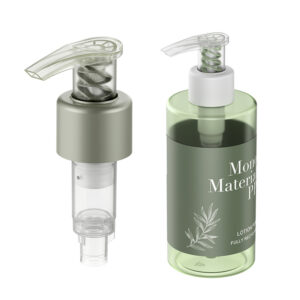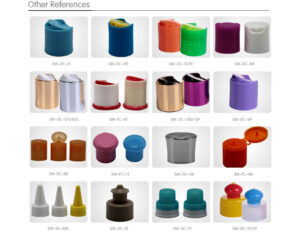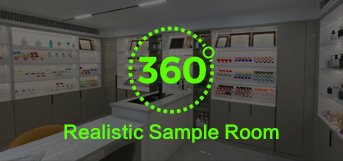Definition of Masterbatch
Masterbatch, also known as color species, is a kind of aggregate prepared by uniformly loading super-constant pigments or dyes in resin.
Several advantages of using color masterbatch: 1. It is beneficial to maintain the chemical stability of the pigment and the stability of the color; 2. Make the pigment have better dispersibility in plastics; 3. Protect the health of operators; 4. Process Simple, easy to change color; 5. The environment is clean and does not stain the utensils; 6. Save time and raw materials.
Color masterbatch is used for the coloring of polyethylene, polypropylene, polystyrene, ABS, nylon, PC, PMMA, PET, and other resins, and is also widely used in daily chemical packaging, cosmetic packaging, food packaging, pharmaceutical packaging, household appliances, agricultural Films, auto parts, health care equipment, fibers, clothing, wires and cables, and other fields.
Masterbatch color Matching Process Principle

01. Complementary Chromatic Law
The color ring method is often used for the mixing of certain colors, which can be described in the form of rings, as shown in the following figure.

Each fan-shaped block in the figure represents a color light, and there is another corresponding fan-shaped color light at the opposite corner. This pair of color lights are called complementary color.
If a color is mixed with its complement in the proper proportions, it produces gray; if the two are mixed in other proportions, it produces a desaturated color with approximately larger proportions of the color components.
02. Intermediate Chromaticity
The mixing of any two non-complementary colors produces an intermediate color, the hue of which is determined by the relative amount of the two colors, and the saturation of which is determined by the distance of the two in hue order.
03. the law of substitution
Similar colors are similar after mixing. If color A = color B, color C = color D, then: color A + color C = color B + color D. Therefore, the pursuit of the same or similar tones is a common problem in the process of color matching. The original sample and the replica will appear metamerism or approximate metamerism, and it is difficult to achieve the same spectral reflectance curve.
04. Mixing of colors and pigments (subtractive mixing)
People often refer to red, yellow and blue as the three primary colors. The two primary colors are combined to form secondary colors. There are also three secondary colors.
On the basis of the primary color or secondary color, by diluting it with white, you can get light pink, light blue, lake blue and other shades of different colors; adding different amounts of black, you can get brown, dark brown, black green and other bright colors. different colors.
Therefore, white and black are often called vanishing colors.
Masterbatch Production Process Principle

The most typical production process of color masterbatch is high-speed mixer and twin-screw extruder. The surface of the pigment is treated with additives, and the pigment is sheared, dispersed and stabilized by different combinations of screws. It involves the uniform mixing and dispersion of pigments and the control of screw extrusion molding process.
01. Homogeneous mixing and dispersing process of pigments
The uniform mixing and dispersion of the pigment is mainly completed by a high-speed mixer.
When the high-speed mixer is working, the high-speed rotating impeller makes the material move tangentially along the impeller by means of the friction between the surface and the material and the thrust of the side against the material. At the same time, due to the action of centrifugal force, the material is thrown to the inner wall of the mixing chamber and rises along the wall surface. When it rises to a certain height, due to the action of gravity, it falls back to the center of the impeller, and then is thrown up again. The combination of this upward movement and tangential movement makes the material actually in a continuous spiral up and down movement state.
Due to the high rotational speed of the impeller, the moving speed of the material is also very fast, and the rapidly moving particles collide and rub against each other, so that the agglomerates are broken, the temperature of the material rises correspondingly, and the interactive mixing is carried out rapidly at the same time. These actions promote homogeneous distribution of components and absorption of liquid additives.
The baffles in the mixing chamber further disturb the flow of the material, causing the material to form random motion and creating a strong vortex near the baffles. For high-mounted impellers, the material forms a continuous cross-flow above and below the impeller, resulting in faster mixing. After the mixing is completed, the cooling medium passes through the jacket, and the cooled material is discharged from the discharge port under the action of the impeller.
02. Screw extrusion molding process
Extrusion molding is a type of thermal processing. Under the action of the rotating screw, the mixed material is continuously transported forward, during which the material is continuously compressed and propelled by pressure. The friction, shearing and heat generation between the materials, between the materials and the screw barrel, and at the same time by external heating, the phase structure of the materials changes and gradually melts into a viscous fluid melt. Then, under the action of the extrusion system, the homogenized plastic melt is extruded through the extruder head and die at a constant temperature and pressure, and enters the next step of setting, cooling, pulling and pelletizing.
In order to achieve good dispersion of the pigment and maintain dispersion stability, in addition to controlling the formulation composition and extrusion temperature and speed, the length-diameter ratio of the screw and the reasonable arrangement and combination of the screw are also very important. At the same time, the extrusion temperature is set according to the thermal performance parameters of the carrier resin in the masterbatch. Different mixing and dispersing effects can be achieved by changing the arrangement and combination of screw elements in the screw.











